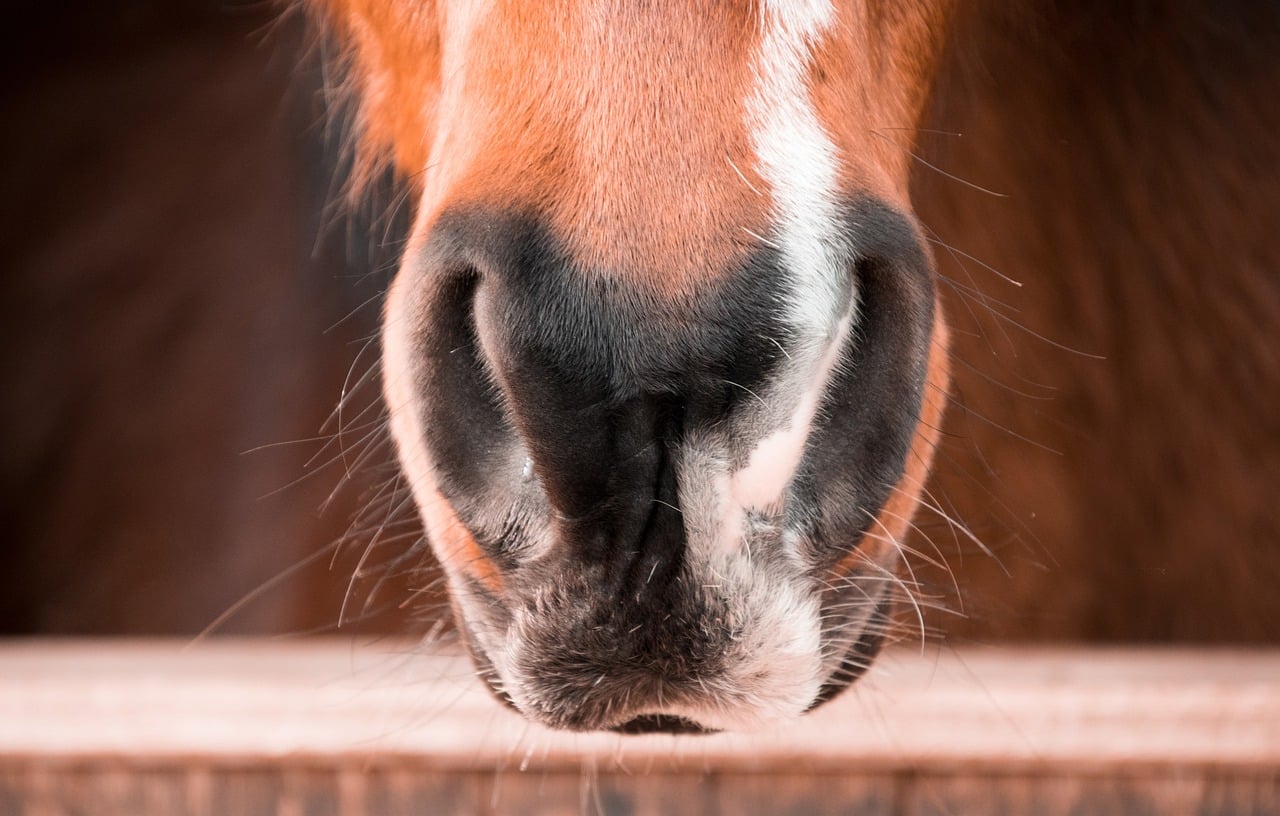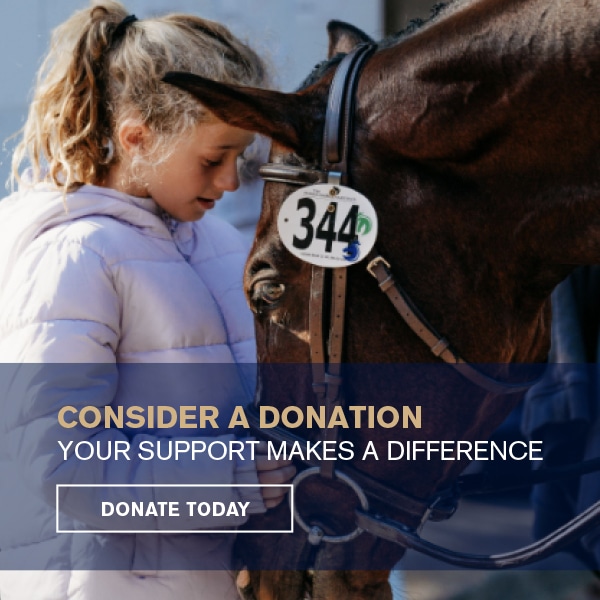
Photo via Pixabay
Racehorses are well-known for “bleeding” after intense exercise, including training and racing. This condition, referred to as exercise-induced pulmonary hemorrhage, or EIPH, does occur relatively commonly. Estimates suggest 43-75% of Thoroughbred racehorses experience episodes of bleeding, with some researchers believing this number can climb to 95%.
Despite what sensational media stories suggest, most horses that experience EIPH do not have an apparent nosebleed (epistaxis).
“In the vast majority of cases blood is only evident in the trachea or lower airways and is only visible when the horse’s respiratory tract is scoped or has a bronchoalveolar lavage (BAL, lung wash) between 30 and 120 minutes after exercise,” says Jenifer R. Gold, DVM, Dipl. ACVIM-LA, ACVECC-LA, an associate at Wisconsin Equine Clinic & Hospital, in Oconomowoc.
With the high prevalence of EIPH in the racing population, owners of off-track Thoroughbreds might wonder if they’re saddled with a bleeding problem. If a horse is a bleeder, will it persist in his second career? And if so, what are the potential consequences?
Understanding EIPH
“We still don’t have the whole answer as to why horses bleed, but we do know it’s multifactorial,” says Gold.
Factors contributing to EIPH, she says, include:
■ A large heart cable of producing high cardiac output (a large amount of blood pumped out of the heart with each contraction) and high heart rate (greater than 200 beats per minute but typically 240 beats per minute).
■ Pulmonary capillaries (small blood vessels) that might not be strong enough to contain blood at the high pressures created during exercise.
■ An increase in blood viscosity because of splenic contraction (releasing stored red blood cells into circulation), which in turn makes the blood more viscous and increases pressure in the lungs.
Gold says one proposed theory that could explain EIPH is capillary stress failure. A very thin layer of tissue separates the capillaries from the air in the lungs where gas exchange occurs — specifically, where the blood becomes oxygenated and the carbon dioxide is removed from the bloodstream and body. Mechanical failure of this blood-gas barrier might occur when the blood pressure is high in the capillaries and the airways experience a high negative pressure that only occurs with intense exercise, causing them to bleed.
Consequences of Bleeding
Performance The jury is still out on whether bleeding affects racehorse performance. While some study results clearly indicate EIPH has a negative impact on racing performance in Thoroughbreds, others say it’s debatable. For example, research findings suggest horses with higher (worse) grades of EIPH have lower odds of finishing in the first three positions or finish at a longer distance behind the winner than horses that do not show signs of EIPH. Reports also suggest horses with severe (Grade 4, on the 0-to-4 scale) EIPH might have shorter racing careers. Other researchers, however, have reported that EIPH does not influence a racehorse’s finishing position or time. Specifically, researchers in Australia found no association between mild to moderate hemorrhage and inferior race day performance. Finally, some horse people believe bleeding is associated with superior performance because it reflects greater racing effort.
You can access a comprehensive summary of these results in the American College of Veterinary Internal Medicine Consensus Statement on EIPH, available at bit.ly/3BONb53.
Health and Well-Being No specific health issues appear to occur following episodes of EIPH. That said, study results suggest bleeding can result in airway inflammation.
The authors of the consensus statement write that evidence shows EIPH is a progressive disease, and microscopic scarring in the lungs can be found in some horses that bleed following exercise.
“We just don’t know how it affects long-term careers,” says Gold. “EIPH may contribute to inflammatory airway disease, but that is still up for debate.”
Do Retired Racehorses Still Bleed?
Estimates suggest approximately 3,000 Thoroughbreds retire from the track each year. Knowing which health problems to expect moving into their second careers would be beneficial to future owners, particularly if a horse was a bad bleeder and because bleeding might be progressive.
Nonetheless, Gold says owners don’t likely need to be overly concerned about their OTTBs bleeding.
“It really depends on what they are used for,” she says. “EIPH typically occurs only after intense exercise. If they are a dressage horse or trail horse or participating in any sport that does not push their heart rates like racing, they likely won’t bleed. If they are eventing and really pushing on the cross-country course they could bleed, but retired Thoroughbreds are no more likely to bleed than other eventers.”
Dot Morgan, founder and executive director of New Vocations Racehorse Adoption Program, says her organization rehomes an average of 400 horses a year. Her opinion matches Gold’s in that Thoroughbreds are no more prone to bleeding once they retire from the track than any other horse.
“I can’t speak for all of our trainers and say that we have never seen a case of pulmonary bleeding due to exercise, but I haven’t heard of any in my 30 years and 8,000 horses placed,” Morgan says. “I believe this is a nonissue on our end. There may be an occasional retired Thoroughbred that bleeds during the cross-country phase of eventing, but I haven’t heard it discussed.”
Some retired racehorses enjoy second careers as polo ponies. These horses can experience episodes of EIPH, presumably due to the high intensity of exercise in the sport. For example, one review study reports approximately 34-46% of polo ponies (of other breeds) display evidence of EIPH.
No specific data exist for EIPH in other equine disciplines Thoroughbreds commonly participate in following retirement from racing, including dressage, show jumping, endurance, trail riding or pleasure.
The number of horses — regardless of breed or prior use — that bleed in most disciplines besides racing, polo and barrel racing remains unknown but is thought to be small. Even when competing in these disciplines at a national or international level, which wouldn’t be uncommon for a retired racehorse, the prevalence of bleeding has not been reported and does not appear to be a major concern to future owners. Instead, a survey about Thoroughbreds in second careers reveals soundness was the leading characteristic future owners looked for when adopting an OTTB (Stowe and Kibler, 2016). The survey respondents did not mention EIPH as a concern.
Take-Home Message
Gold says she doesn’t believe Thoroughbreds are more prone to bleeding than any other horse.
“All horses have the potential to bleed if they get their heart rate up enough,” she notes.
If you’re concerned your horse is suffering episodes of EIPH and/or he’s showing signs of bleeding from the nose or mouth, talk to your veterinarian. A number of conditions — from fungal infections to head trauma — can result in nosebleeds or blood in the airways.

